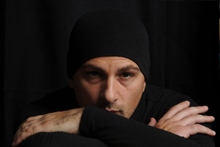Michele Di Toro

Last update: before 2019
Michele Di Toro is a very talented pianist. He’s been showing a great attitude to music since he was a child, particularly to piano.
He graduated with honours getting the highest marks at Pescara academy of music and later he attended a postgraduate course to the Ecole Normale de Musique Alfred Cortot of Paris, where he received a Diploma in Piano performance and composition, unanimously given. He then specialized attending advanced jazz courses in Milan and gained the first place at many competitions as the ‘F. Goulda Award’ for jazz pianists and a special credit at the International Competition ‘Martial Solal’ in Paris.
Michele regularly plays in the main Italian and European cities with tours in United Kingdom, Canada, France, Finland, Slovenjia where he performs in piano solo or duo, trio, quartet and orchestra, always succeeding due to his particular eclecticism although he prefers piano solo concerts.
He is frequently invited to play at the most prestigious music halls such as Milan - MITO SettembreMusica, Auditorium, Museo della Scienza, Blue Note, Conservatorio Verdi, Teatro Strehler, Teatro Studio, Società dei Concerti, Società Umanitaria, Camera del Lavoro, Rocca dei Principi Borromeo, in Rome Museo Pigorini, Anfiteatro Auditorium, Alexander Platz, in Porto Cervo Yacht Club, in Paris Musée Debussy, in Genova Borgo Jazz Club, Teatro della Gioventù.
Michele also attended some of the most famous jazz festivals such as Festival Jazz of Pori (Finland), Umbria Jazz, Iseo Jazz, Stresa Jazz. In Piazza del Popolo in Rome, on the Notte Bianca event, Michele performed in front of 35.000 people.
Some of the greatest italian pianists continuously appreciate him as Maurizio Pollini, Enrico Pieranunzi, Franco D'Andrea, Danilo Rea, Enrico Intra, just to mention a few.
He also works with some big music artists as Paolo Fresu, Fabrizio Bosso, Irio de Paula, Franco Cerri, Gianni Ferrio, Barbara Casini, Mardy Byers, Roberto Prosseda.
In 2005 he founded a trio named like himself and the trio’s first two works have been very appreciated by public and critics.








